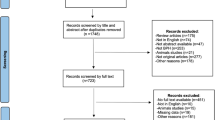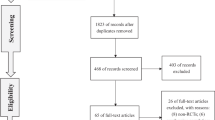Abstract
Background
Clinical guidelines have conflicting recommendations on the role of prostate artery embolization (PAE), a novel interventional radiology technique used to treat benign prostatic hyperplasia (BPH). In the absence of consensus among clinicians, patients may seek information online, where consumer-targeted content has proliferated in recent years. Our objective was to assess the content and quality of online information about prostate artery embolization (PAE).
Methods
We evaluated patient interest and exposure to PAE by searching Google Trends for PAE and searching Google for BPH and treatment-related terms. To assess online content about PAE safety and efficacy, we queried Google for patient-oriented websites and YouTube for consumer videos, assessing quality using the validated DISCERN instrument and performing an evidence-based content analysis of how indications, risks, and benefits of PAE were presented.
Results
Worldwide searches for PAE peaked in 2019; PAE was mentioned in 15 (26%) of the 57 general BPH-related websites. From our PAE-specific searches, we identified 50 websites and 31 videos. Academic hospitals were the most common sponsor of both PAE-related websites (16, 32%) and videos (15, 48%). Among sources offering PAE to patients, only 15% of websites and 11% of videos explicitly did so as part of a clinical trial. The average DISCERN rating of quality of content was 3.0 out of 5 for websites and 2.0 out of 5 for videos (p < 0.001). Over a quarter of websites and more than half of videos contained potential misinformation, inaccuracies, or non-evidence-based claims about PAE (p = 0.02).
Conclusions
Online consumer information about PAE is of low to moderate quality, with a high frequency of non-evidence-based claims. In the absence of guideline consensus about the role of PAE, clinicians should offer shared decision making and evidence-based counseling about the risks and benefits of PAE.
This is a preview of subscription content, access via your institution
Access options
Subscribe to this journal
Receive 4 print issues and online access
$259.00 per year
only $64.75 per issue
Buy this article
- Purchase on Springer Link
- Instant access to full article PDF
Prices may be subject to local taxes which are calculated during checkout


Similar content being viewed by others
References
Wei JT, Calhoun E, Jacobsen SJ. Urologic Diseases in America Project: Benign Prostatic Hyperplasia. J Urol. 2008;179:S75–S80.
Lee SWH, Chan EMC, Lai YK. The global burden of lower urinary tract symptoms suggestive of benign prostatic hyperplasia: a systematic review and meta-analysis. Sci Rep. 2017;7:7984.
Christidis D, McGrath S, Perera M, Manning T, Bolton D, Lawrentschuk N. Minimally invasive surgical therapies for benign prostatic hypertrophy: the rise in minimally invasive surgical therapies. Prost Int. 2017;5:41–6.
Shim SR, Kanhai KJK, Ko YM, Kim JH. Efficacy and safety of prostatic arterial embolization: systematic review with meta-analysis and meta-regression. J Urol. 2017;197:465–79.
McWilliams JP, Kuo MD, Rose SC, Bagla S, Caplin DM, Cohen EI, et al. Society of interventional radiology position statement: prostate artery embolization for treatment of benign disease of the prostate. J Vasc Interv Radiol. 2014;25:1349–51.
Kaplan SA. Re: prostate artery embolization in patients with prostate volumes of 80 mL or more: a single-institution retrospective experience of 93 patients. J Urology. 2019;29:1392–8.
Carnevale FC, Soares GR, de Assis AM, Moreira AM, Harward SH, Cerri GG. Anatomical variants in prostate artery embolization: a pictorial essay. Cardiovasc Intervent Radiol. 2017;40:1321–37.
Jones P, Rai BP, Nair R, Somani BK. Current status of prostate artery embolization for lower urinary tract symptoms: review of World Literature. Urology. 2015;86:676–81.
Ray AF, Powell J, Speakman MJ, Longford NT, DasGupta R, Bryant T, et al. Efficacy and safety of prostate artery embolization for benign prostatic hyperplasia: an observational study and propensity-matched comparison with transurethral resection of the prostate (the UK-ROPE study). BJU Int. 2018;122:270–82.
NICE Guidance - Prostate artery embolisation for lower urinary tract symptoms caused by benign prostatic hyperplasia: © NICE (2018). Prostate artery embolisation for lower urinary tract symptoms caused by benign prostatic hyperplasia. BJU Int. 2018;122:11–2.
Foster HE, Dahm P, Kohler TS, Lerner LB, Parsons JK, Wilt TJ, et al. Surgical Management of Lower Urinary Tract Symptoms Attributed to Benign Prostatic Hyperplasia: AUA Guideline Amendment 2019. J Urol. 2019;202:592–8.
Gravas S, Cornu J, Gacci M, Gratzke C, Herrmann TRW, Mamoulakis M, et al. EAU Guidelines: Management of Non-neurogenic Male LUTS. Retrieved from: https://uroweb.org/guideline/treatment-of-non-neurogenic-male-luts/. Accessed 18 Dec. 2019.
Clarke MA, Moore JL, Steege LM, Koopman RJ, Belden JL, Canfield SM, et al. Health information needs, sources, and barriers of primary care patients to achieve patient-centered care: A literature review. Health Informatics J. 2016;22:992–1016.
Walsh MC, Trentham-Dietz A, Schroepfer TA, Reding DJ, Campbell B, Foote ML, et al. Cancer information sources used by patients to inform and influence treatment decisions. J Health Commun. 2010;15:445–63.
Fox S. The social life of health information. Pew Research Center. Retrieved from: https://www.pewresearch.org/fact-tank/2014/01/15/the-social-life-of-health-information/. Accessed 18 Dec. 2019.
Chou WYS, Oh A, Klein WMP. Addressing Health-Related Misinformation on Social Media. J Am Med Assoc. 2018;320:2417–8.
Loeb S, Sengupta S, Butaney M, Macaluso JN, Czarniecki SW, Robbins R, et al. Dissemination of misinformative and biased information about prostate cancer on YouTube. Eur Urol. 2019;75:564–7.
iProspect. iProspect Search Engine User Behavior Study [Internet]. 2006 [cited 2019 Dec. 18]. Available from: http://district4.extension.ifas.ufl.edu/Tech/TechPubs/WhitePaper_2006_SearchEngineUserBehavior.pdf.
Quality criteria for consumer information. Discern Online.
Health on the Net [Internet]. [cited 2019 Dec. 1]. Available from: https://www.hon.ch/en/.
Koo K, Yap RL. How readable is BPH treatment information on the internet? Assessing barriers to literacy in prostate health. Am J Mens Health. 2017;11:300–7.
Koo K, Yap RL. Commercial sponsorship and health on the net certification of online sources of information about benign prostatic hyperplasia. Urol Pract. 2016;3:338–41.
Sood A, Sarangi S, Pandey A, Murugiah K. YouTube as a source of information on kidney stone disease. Urology. 2011;77:558–62.
Ho M, Stothers L, Lazare D, Tsang B, Macnab A. Evaluation of educational content of youtube videos relating to neurogenic bladder and intermittent catheterization. J Can Urol Assoc. 2015;9:320–54.
Tanwar R, Khattar N, Sood R, Makkar A. Benign prostatic hyperplasia related content on YouTube: Unregulated and concerning. Recenti Prog Med. 2015;106:337–41.
Betschart P, Pratsinis M, Müllhaupt G, Rechner R, Herrmann TR, Gratzke C, et al. Information on surgical treatment of benign prostatic hyperplasia on YouTube is highly biased and misleading. BJU Int. 2019;125:595–601.
Alsyouf M, Stokes P, Hur D, Amasyali A, Ruckle H, Hu B. ‘Fake News’ in urology: evaluating the accuracy of articles shared on social media in genitourinary malignancies. BJU Int. 2019;124.
Traver MA, Passman CM, Leroy T, Passmore L, Assimos DG. Is the internet a reliable source for dietary recommendations for stone formers? J Endourol. 2009;23:715–7.
Herbert AS, Nemirovsky A, Hess DS, Walter D, Abraham NE, Loeb S, et al. Pelvic organ prolapse on YouTube: evaluation of consumer information. BJU Int. 2020;125:759–60.
Barry MJ, Edgman-Levitan S. Shared decision making - The pinnacle of patient-centered care. New England J Med. 2012;366:780–1.
O’Connor AM, Llewellyn-Thomas HA, Flood AB. Modifying unwarranted variations in health care: Shared decision making using patient decision aids. Health Affairs. 2004;63–72.
Arterburn D, Wellman R, Westbrook EO, Ross TR, McCulloch D, Handley M, et al. Decision aids for benign prostatic hyperplasia and prostate cancer. Am J Manag Care. 2015;21:130–40.
van der Wijden FC, de Angst IB, Lamers RED, Cuypers M, de Vries M, van Melick HHE, et al. Effectiveness of a web-based treatment decision aid for men with lower urinary tract symptoms due to benign prostatic hyperplasia. BJU Int. 2019;124:124–33.
Clement J Global market share of search engines 2010–2019 [Internet]. Statistica. [cited 2019 Dec. 18]. Available from: https://www.statistica.com/statistics/216573/worldwide-market-share-of-search-engines/.
Koo K, Yap RL. Trends in urological direct-to-consumer advertising during prime-time television news programs. Urol Pract. 2017;4:7–13.
Thomas D, Medoff B, Anger J, Chughtai B. Direct-to-consumer advertising for robotic surgery. J Robotic Surgery. 2020;14:17–20.
Author information
Authors and Affiliations
Corresponding author
Ethics declarations
Conflict of interest
The authors declare that they have no conflict of interest.
Additional information
Publisher’s note Springer Nature remains neutral with regard to jurisdictional claims in published maps and institutional affiliations.
Rights and permissions
About this article
Cite this article
Huang, M.M., Winoker, J.S., Matlaga, B.R. et al. Evidence-based analysis of online consumer information about prostate artery embolization for benign prostatic hyperplasia. Prostate Cancer Prostatic Dis 24, 106–113 (2021). https://doi.org/10.1038/s41391-020-0242-2
Received:
Revised:
Accepted:
Published:
Issue Date:
DOI: https://doi.org/10.1038/s41391-020-0242-2
This article is cited by
-
Ejaculation physiology and dysfunction after BPH surgery: the role of the new MISTs
Prostate Cancer and Prostatic Diseases (2023)
-
Trans - Perineal laser ablation of the prostate in high surgical risk patients affected by severe lower urinary tract symptoms related to benign prostatic obstruction
Prostate Cancer and Prostatic Diseases (2023)
-
Patient Engagement in the Management of Benign Prostatic Hyperplasia
Current Bladder Dysfunction Reports (2022)
-
Efficacy and safety of prostatic artery embolization for benign prostatic hyperplasia: a systematic review and meta-analysis of randomized controlled trials
European Radiology (2021)



